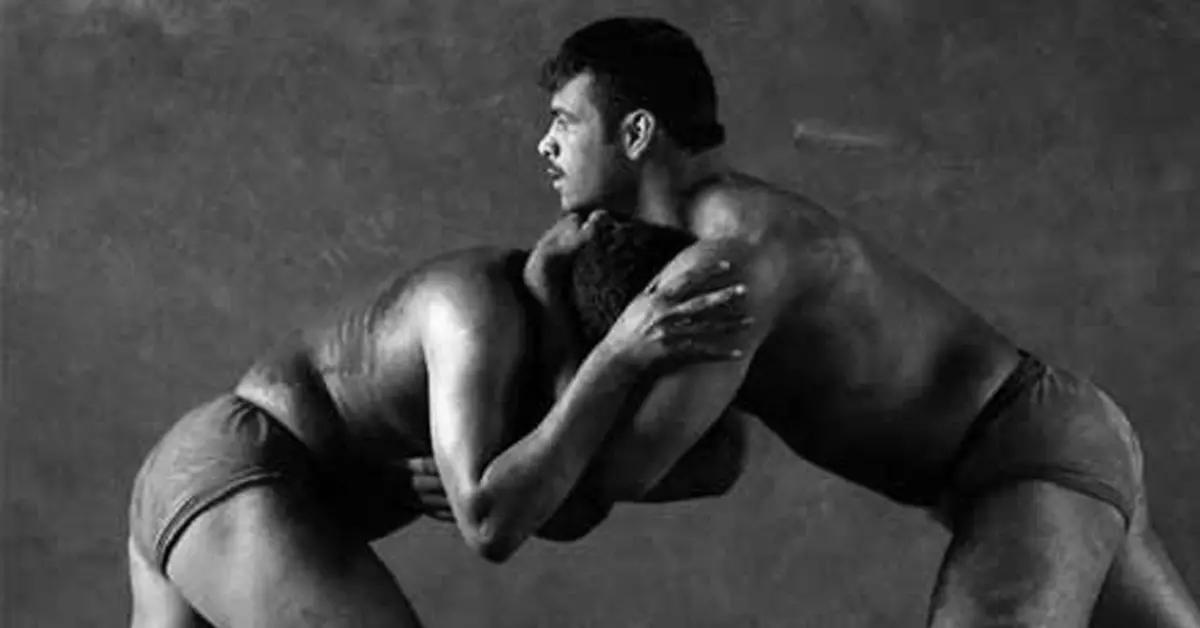Begin typing your search above and press return to search.
Forgotten Heroes
Gobor Goho: The visionary wrestler who brought India to the world wrestling map in 1910
Long before, KD Jadhav won the first wrestling Olympic medal for India, It was Gobor Goho who showed the world the strength of Indian wrestlers,

Representational image
Wrestling is often deemed the oldest sport in the world. However, the sport has evolved over centuries and became a part of the Modern Olympic Games since it started in Athens in 1896. Wrestling became a major discipline of the Games, except the 1900 Summer Olympics when it did not appear on the program.
In India, the wrestling wave was passed on through the Akhada culture, which saw it getting popular across several states. India's track record in wrestling at the Olympics has also been pretty impressive, with five medals in the stride. But long before KD Jadhav, the first Indian wrestler to bring an Olympic medal, courted success in 1952, a wrestler from Bengal gave the European wrestlers a run for their money. Jatindra Charan Guha, aka Gobor Goho was one of the most prominent names of Indian wrestling during the early 20th century whose name has been forgotten under the annals of history and now exists barely in the footnotes.
Jatindra was born on the auspicious day of Holi of 1892 in the family of wrestler Ambikacharan Guha in Kolkata. Ambikacharan, dearly called by the British Ambu Babu, had set up an akhada in Kolkata. Ambu Babu's eldest son Ramcharan was also a wrestler, and his youngest son Khetracharan was known to have tutored Swami Vivekananda. Ramcharan's son Jatindra was often called 'Gobor' (Cowdung in Bengali) as a mockery for being lazy. And under British influence, his surname Guha was anglicised into Goho, which led him to be known as 'Gobor Goho'.
A young Gobor Goho (Source: Wikipedia)
Though being a part of a family where wrestling ran in veins, Gobor barely showed any interest in the sport. He instead picked up Hindustani classical music as his co-curricular and started receiving formal training in it. It was only after his father's death in 1901, the baton of wrestling was unwillingly passed on to Gobar, who took up the sport at the age of nine, under the supervision of Khetracharan.
In his formative years, Gobor was given wrestling lessons by a personal trainer hired by his uncle. At 15, when he was slowly gaining momentum in the Bengal wrestling ecosystem, he was struck by tragedy when Khetracharan passed away in 1909. His death probably brought more maturity in Gobor, who then took up a proactive measure to carry forward the legacy of Indian wrestling.
Gobor went on a trip to Lucknow with his wrestling enthusiast brother-in-law Sarat Kumar Mitra to watch matches of the best contemporary wrestlers like Ghulam Mohammad Baksh, aka Gama Pehelwan, and Rahim Sultaniwala. It is here, Goho came up with a master plan. He convinced Mitra, an affluent businessman, to sponsor the Indian wrestlers to go to London and fight with international wrestlers to show the world just how good Indians were.
The following year, a group of Indian wrestlers, including Gama, his brother Imam Baksh and two others, alongside Mitra and Goho landed in England. Goho, however, had to depart immediately because of his mother's illness back in Kolkata; Gama Pehelwan took the centre stage and became a reckoning force in the world. It was Goho's visionary idea that had put India on the world wrestling map.
The Indian team once again made a return to the European tour in 1913, and this time, there was no one to stop Goho. Standing at six feet and one inch tall and weighing around 130 kilograms, Goho unleashed his series of sporadic performances in the tour defeating champion wrestlers like Jimmy Campbell, Scotland's best wrestler. Goho took on each wrestler at a time. When he beat Jimmy Essen, aka the Scottish Giant, he was deprived of the 'John Bull Belt', presented to the reigning British champion because although he was a British subject, he was not a bona fide British. However, the biggest match and triumph of Goho's career was his bout with America's light heavyweight champion, Adolf Santel, in 1921.
Goho, who earned the moniker as the 'Hindu Giant' in an American newspaper, beat Santel in a match that lasted more than an hour. Later in 1996, India commemorated the Goho v/s Santel match by releasing a stamp in the platinum jubilee of the occasion.
Goho also harboured a strong sense of patriotism in him. In 1915, when Rabindranath Tagore renounced his Knighthood in protest against the Jalianwallah Bagh massacre, Goho was in London, and he too protested publicly against British atrocities in India. When he was in New York, he was invited to deliver a lecture, and he discussed Tagore's vision, life, and teachings at length.
In the later part of his life, Goho picked up the reins of his family akhada and also set up his own akhada by the time, which was often frequented by renowned personalities of contemporary Kolkata. Unfortunately, Goho passed away in 1972, leaving a significant mark on the success of Indian wrestling.
Next Story
